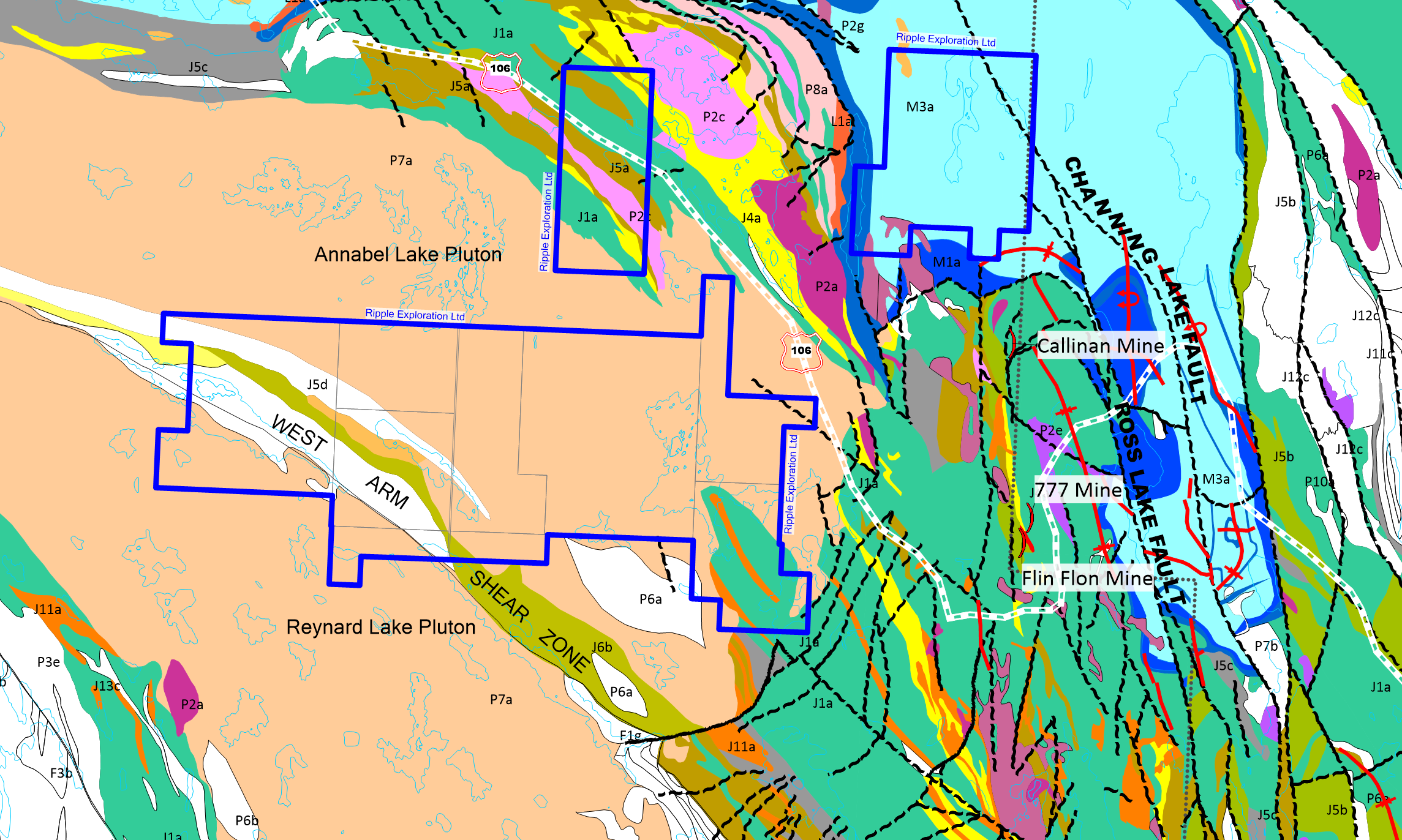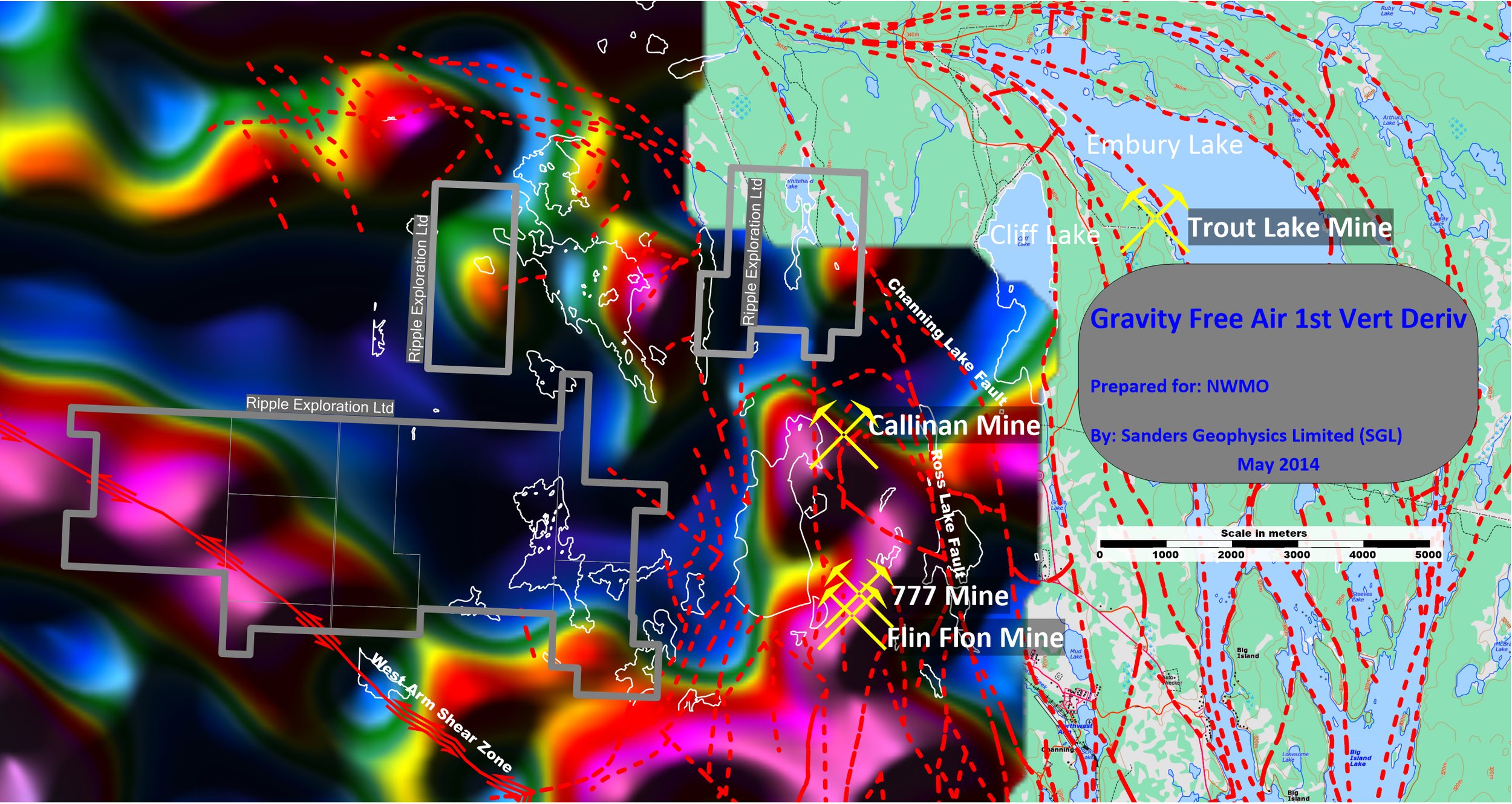HAMELL LAKE PROPERTY WITH THE NEARBY RAFT LAKE PROPERTYRIPPLE EXPLORATION LTD
〰️
RIPPLE EXPLORATION LTD 〰️

The Historic Flin Flon Mine is 4.5 kilometers southeast of the Hamell Lake Property. Started in 1928 with 16 million tonnes of resources, it was mined initially as an open pit and then underground with the North Main shaft which closed in 1983. In 1939, the South Main shaft was sunk and it operated until 1992. A total of 63 million tonnes of ore was mined from the Main mine. Over a 50 year span the deposit produced over 1.2 billion kilograms copper, over 2.2 billion kilograms zinc, more than 5.8 million ounces gold and over 88 million ounces silver.
The Amisk Group rocks in the Hamell Lake area exhibit early, possibly synvolcanic alterations as (1) broad semi-conformable silicification and (2) localized Fe-Mg enriched areas, which are known to be proximal to base metal mineralization. Zones of silicification southwest of Hamell Lake may be kilometer-scale semi-conformable sub-volcanic alteration similar to that found below VMS deposits at Noranda and Matagami, Quebec and Snow Lake, Manitoba. Rusty pyritic tuffs or argillites have been identified above the silicified zones (Thomas, SEM, 1993). Northwest of Triangle Lake, a narrow, discontinuous, locally gossanous felsic volcanic is interpreted to be stratigraphically equivalent to the mine rhyolite hosting the Flin Flon Cu-Zn deposit (Thomas, SEM, 1993).
The host stratigraphy of the Flin Flon Mine is exposed on a large outcrop informally known as Millrock Hill, south of the South Main shaft, near Creighton, Saskatchewan. Together with the exposed portion of mine rhyolite, the rhyolites on Millrock Hill provide an important glimpse at the diversity in rhyolite facies present in the interval hosting the Flin Flon, Callinan and Triple 7 massive sulphide deposits. It is worthwhile to understand these rocks in detail, as the host rhyolites of the Callinan and Triple 7 deposits are not well exposed on surface.

